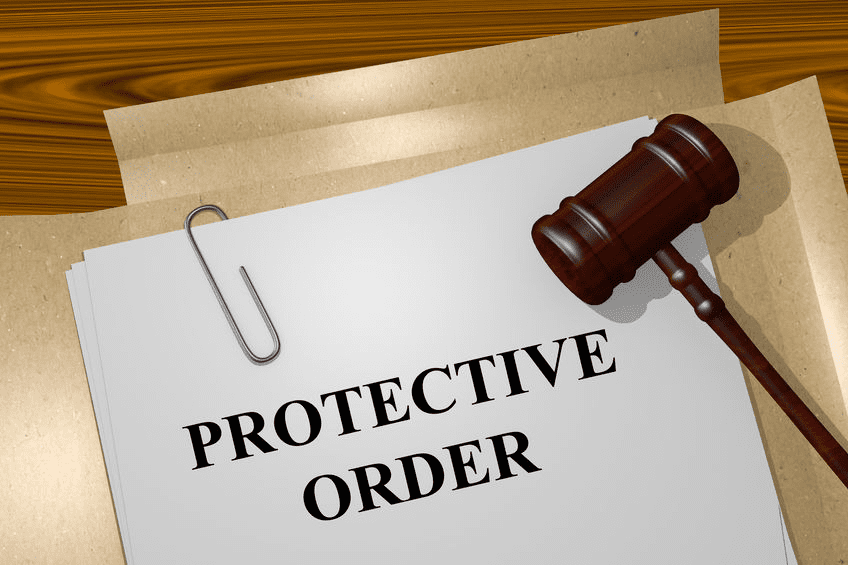Introduction:
Protective orders, also known as restraining orders, are legal instruments designed to provide safety and protection to individuals facing threats, harassment, or domestic violence. While these orders serve a crucial purpose in safeguarding victims, there are instances where individuals may find themselves subject to protective orders they believe are unwarranted or unjust. This article explores the complexities of protective order defense, the legal considerations involved, and effective strategies for contesting such orders.
- Understanding Protective Orders:
- Definition:
Protective orders are court-issued directives intended to prevent contact or proximity between an individual (the respondent) and the person seeking protection (the petitioner). These orders are often sought in cases of domestic violence, harassment, or situations where the safety of an individual is at risk.
- Types of Protective Orders:
- Domestic Violence Protective Order (DVPO): Issued in cases involving domestic violence or abuse within familial or intimate relationships.
- Civil Harassment Protective Order (CHPO): Applicable in situations where there is harassment or credible threats, not necessarily within a domestic context.
- Workplace Violence Protective Order: Designed to protect individuals from threats or violence in the workplace.
- Reasons for Contesting Protective Orders:
- False Allegations:
Individuals may contest protective orders if they believe the allegations against them are false, exaggerated, or based on misunderstandings.
- Lack of Due Process:
Contesting a protective order may also be motivated by concerns related to the lack of due process in the issuance of the order.
- Impact on Reputation and Rights:
Protective orders can have severe consequences, affecting one’s reputation, employment, and personal relationships. Contesting an order becomes crucial to protect one’s rights and interests.
III. Legal Considerations:
- Burden of Proof:
In protective order cases, the burden of proof typically rests on the petitioner, who must demonstrate that the order is necessary for their safety. Understanding the legal standard for proof is crucial in building a defense.
- Evidence:
Both parties involved in a protective order case have the opportunity to present evidence. This may include witness testimony, documents, or other forms of evidence relevant to the allegations.
- Violation Consequences:
Understanding the consequences of violating a protective order is crucial. Violating an order can result in criminal charges and further legal consequences.
- Strategies for Contesting Protective Orders:
- Seek Legal Representation:
Engaging the services of an experienced attorney is fundamental when contesting a protective order. Legal professionals can provide guidance on the specific laws in the jurisdiction, build a robust defense strategy, and represent the individual in court.
- Gather Evidence:
Collecting relevant evidence to challenge the allegations is crucial. This may include text messages, emails, witness statements, or other documentation that contradicts the claims made in the protective order.
- Challenge the Basis for the Order:
Contesting the basis for the protective order involves demonstrating that the alleged behavior does not meet the legal criteria for the issuance of such an order.
- Demonstrate Compliance with the Law:
If the protective order is based on alleged criminal behavior, demonstrating compliance with the law, such as completing counseling or anger management programs, can be a compelling argument in court.
- Present Counter-Evidence:
This may involve cross-examining witnesses, challenging the credibility of statements, and offering alternative explanations for the events in question.
- Challenge Due Process Violations:
If there are concerns about due process violations in the issuance of the protective order, these issues should be raised in court. Due process violations may include inadequate notice, lack of opportunity to be heard, or other procedural errors.
- Mediation or Settlement:
This can involve negotiation and agreeing to specific terms that both parties find acceptable.
- Post-Contesting Considerations:
- Compliance with Court Orders:
- Monitoring and Appeal:
If the protective order is upheld and the individual disagrees with the decision, they may explore the possibility of appealing the decision. This typically involves a review by a higher court.
- Counseling or Rehabilitation:
In cases where the protective order is based on behavior that raises concerns, voluntarily engaging in counseling or rehabilitation programs may demonstrate a commitment to personal growth and change.
Conclusion:
Contesting a protective order is a complex legal process that requires careful consideration of the specific circumstances, understanding of the relevant laws, and strategic planning. Individuals facing unjust protective orders should seek legal representation, gather compelling evidence, and be prepared to present a strong defense in court. While protective orders play a vital role in safeguarding individuals from harm, it is equally important to ensure that the legal process is fair, respects due process, and considers the rights of all parties involved. Through diligence, legal expertise, and a commitment to justice, individuals can navigate the challenging terrain of contesting protective orders and work towards a resolution that is fair and just.



































